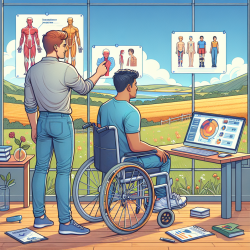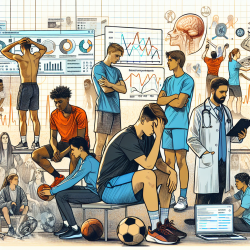As practitioners in the field of special education and therapy services, it is essential to stay informed about the latest research that can enhance our practice. One such valuable study is "Higher independent mobility to school among adolescents: A secondary analysis using cross-sectional data between 2010 and 2017 in Spanish youth" by Gálvez-Fernández et al. This research provides critical insights into the independent mobility (IM) of adolescents, offering data that can help practitioners design more effective strategies to promote physical activity and autonomy among youth.
Independent mobility refers to the freedom and ability of children and adolescents to move around their environment without adult supervision. This autonomy is crucial for their physical, social, and emotional development. The study by Gálvez-Fernández et al. analyzed cross-sectional data from 2010 to 2017, involving 3,460 children and 1,523 adolescents in Spain. The findings highlight significant differences in IM based on gender and age, providing a foundation for targeted interventions.
Key Findings
The research identified several key points that can be leveraged to improve practice:
- Gender Differences: Boys exhibited higher levels of independent mobility compared to girls. Specifically, boys aged 12-14 and 14-16 had significantly higher IM than younger boys aged 6-8. For girls, those aged 12-14 also showed higher IM compared to younger girls.
- Age Variations: Adolescents demonstrated higher IM than younger children. This indicates a natural progression of autonomy with age, but also highlights the need for early interventions to encourage IM in younger children.
- Time Period Stability: The study found no significant changes in IM over the studied period (2010-2017), suggesting that the factors influencing IM are consistent over time.
Implications for Practitioners
These findings have several practical implications for practitioners working with children and adolescents. Here are some strategies to consider:
- Gender-Specific Interventions: Given the lower levels of IM among girls, practitioners should develop gender-specific programs that encourage girls to engage in independent travel. This could involve creating safe and supportive environments that address parental concerns about safety.
- Early Encouragement: Interventions should start at a younger age to foster a sense of independence early on. Activities that build confidence and competence in navigating their environment can be particularly beneficial for younger children.
- Collaboration with Stakeholders: Successful promotion of IM requires collaboration with parents, schools, and community organizations. Educating parents about the benefits of IM and addressing their safety concerns can help increase their willingness to allow their children more freedom.
- Policy Advocacy: Advocating for policies that support safe environments for children to travel independently can have a long-term impact. This includes improving infrastructure, such as safe walking and cycling paths, and implementing traffic calming measures.
Encouraging Further Research
While the study provides valuable insights, it also opens the door for further research. Practitioners are encouraged to explore the following areas:
- Longitudinal Studies: Conducting longitudinal studies can help understand how IM evolves over time and the long-term benefits of early interventions.
- Cross-Cultural Comparisons: Comparing IM trends across different cultures and countries can provide a broader understanding of the factors influencing IM and the effectiveness of various interventions.
- Impact of Technology: Investigating how modern technology, such as GPS tracking and mobile apps, can be used to enhance IM and ensure safety.
In conclusion, the study by Gálvez-Fernández et al. offers essential insights that can help practitioners improve their strategies to promote independent mobility among children and adolescents. By understanding the factors that influence IM and implementing targeted interventions, we can support the physical, social, and emotional development of youth.
To read the original research paper, please follow this link: Higher independent mobility to school among adolescents: A secondary analysis using cross-sectional data between 2010 and 2017 in Spanish youth.










